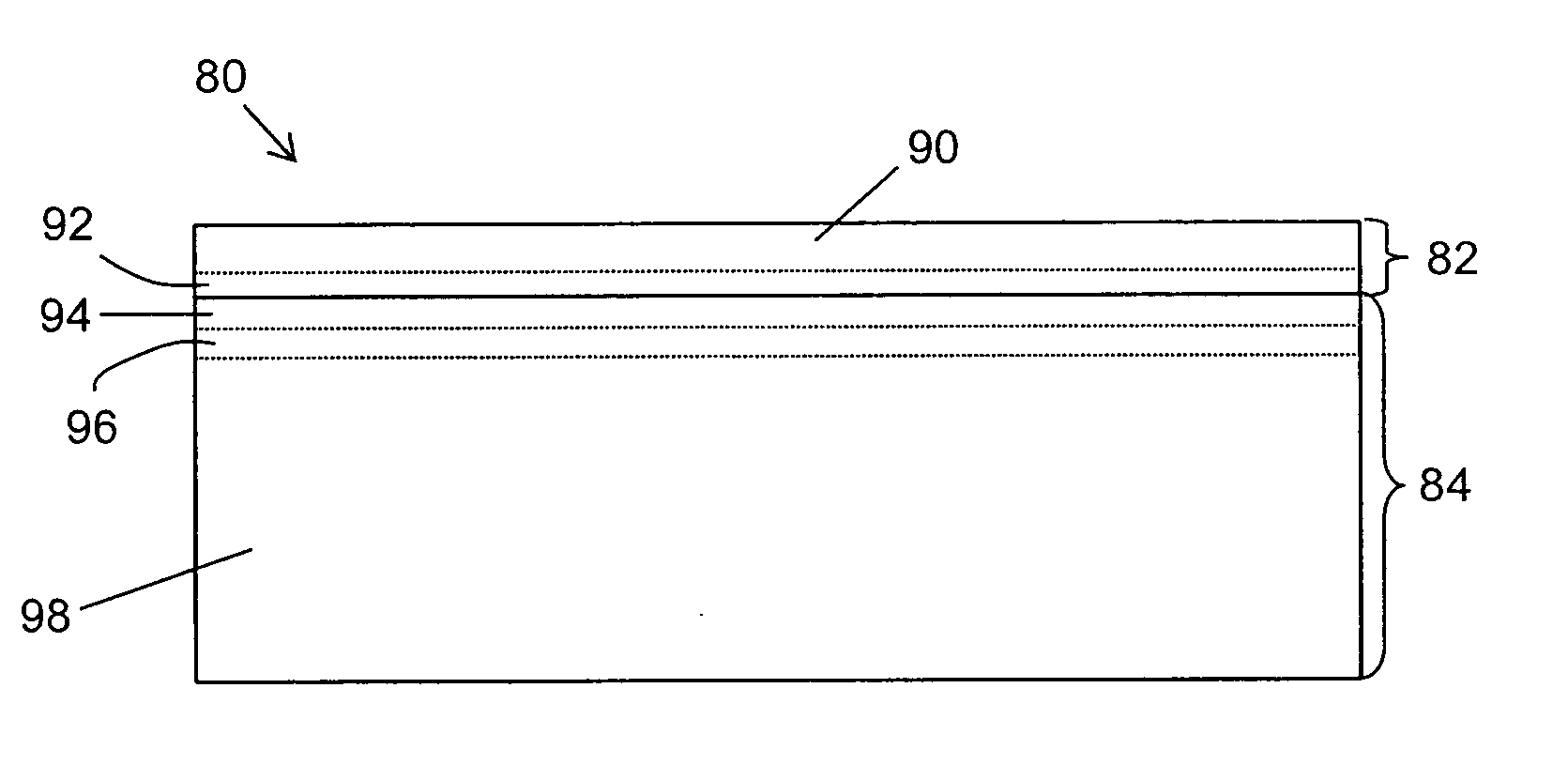High strain glass/glass-ceramic containing semiconductor-on-insulator structures
a technology of glass or glass-ceramic and semiconductor, which is applied in the field of semiconductor-on-insulator structures, can solve the problems of difficult replacement of silicon wafers with glass or glass-ceramic of the type, quartz itself is a relatively expensive material, and the cost of such structures has been etc., to achieve the effect of reducing the cost of silicon wafer replacement, reducing the cost of silicon wafers, and minimizing substrate compaction
- Summary
- Abstract
- Description
- Claims
- Application Information
AI Technical Summary
Benefits of technology
Problems solved by technology
Method used
Image
Examples
example 1
[0118] A 100 mm diameter, 1 mm thick wafer of glass 2N of Table 2, containing about 1 mole % of a Na2O dopant as calculated on an oxide basis, was fine ground and polished. A silicon wafer 525 μm in thickness was implanted with hydrogen at 100 keV and an ion dosage of 8×1016 ions / cm2 was cleaned with detergent and distilled water followed by a 10% nitric acid wash, and brought into contact with the glass wafer in a SUSS MICROTEC bonder. The glass wafer was heated at 450° C. and the silicon wafer at 400° C. in vacuum, and 10 psi pressure and 1750 V potential difference (glass at ground, silicon wafer at 1750 V) was applied for five minutes. While under the same potential difference and pressure, the glass wafer was heated at 575° C. and the silicon wafer at 525° C. for ten minutes, after which time the potential difference and pressure were removed, and the bonded wafers allowed to cool down. The cooled wafers separated into a silicon-on-glass wafer with a thin silicon layer, and a s...
example 2
[0119] A 100 mm diameter, 1 mm thick wafer of the glass-ceramic of 4A of Table 4, containing about 0.9 mole % Na2O dopant as calculated on an oxide basis, was fine ground and polished. A silicon wafer 525 μm in thickness was implanted with hydrogen at 100 keV and an ion dosage of 8×1016 ions / cm2 was cleaned with detergent and distilled water followed by a 10% nitric acid wash, and brought into contact with the glass wafer in a SUSS MICROTEC bonder. The glass wafer was heated at 450° C. and the silicon wafer at 400° C. in vacuum, and 10 psi pressure and 1750 V potential difference (glass at ground, silicon wafer at 1750 V) was applied for five minutes. While under the same potential difference and pressure, the glass wafer was heated at 575° C. and the silicon wafer at 525° C. for ten minutes, after which time the potential difference and pressure were removed, and the bonded wafers allowed to cool down. The cooled wafers separated into a silicon-on-glass wafer with a thin silicon la...
PUM
| Property | Measurement | Unit |
|---|---|---|
| Percent by mass | aaaaa | aaaaa |
| Thickness | aaaaa | aaaaa |
| Length | aaaaa | aaaaa |
Abstract
Description
Claims
Application Information
 Login to View More
Login to View More - R&D
- Intellectual Property
- Life Sciences
- Materials
- Tech Scout
- Unparalleled Data Quality
- Higher Quality Content
- 60% Fewer Hallucinations
Browse by: Latest US Patents, China's latest patents, Technical Efficacy Thesaurus, Application Domain, Technology Topic, Popular Technical Reports.
© 2025 PatSnap. All rights reserved.Legal|Privacy policy|Modern Slavery Act Transparency Statement|Sitemap|About US| Contact US: help@patsnap.com



